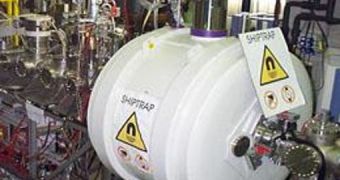Researchers in Germany were recently able to use a special trap so as to collect direct measurements on the weight of no less than three isotopes of the super-heavy chemical element nobelium. While the heaviest stable element to appear in nature is uranium, science was able to synthesize as many as 25 additional chemicals that could remain stable for periods of time ranging from a few fractions of a second to many years (plutonium). The new study will hopefully provide physicists with new data in their quest for the famous “island of stability,” Nature News reports.
This concept refers to a yet-undiscovered class of super-heavy chemical elements that could remain stable for prolonged periods of time, and therefore fit for practical applications. The data could also potentially be used to refine the descriptions of some of the heaviest elements ever created in particle accelerators. Details of the investigation appear in the latest issue of the esteemed journal Nature. These three isotopes could be measured only after they were caught inside a Penning trap, a device that uses static magnetic and electric fields to store charged particles.
The investigation was conducted by nuclear physicist Michael Block, who works at the GSI Helmholtz Center for Heavy Ion Research in Darmstadt, Germany. He has also been the author of the Nature paper, and he reveals that, in some instances, isotopes of super-heavy elements tend to disintegrate within fractions of a second after being formed. Determining their masses under such conditions is not exactly a walk in the park, but extensive calculations and scientific observations can make this possible.
By using inert chambers filled with helium, the researchers managed to slow down the nobelium isotopes considerably, after they were produced by firing calcium atoms onto a target made of lead, all inside a particle accelerator. The Penning trap was then used to make the nobelium isotopes spin in circles, which provided a direct means of measuring their weight. The newly obtained data on their mass is about five orders of magnitude more precise than anything obtained before.

 14 DAY TRIAL //
14 DAY TRIAL //